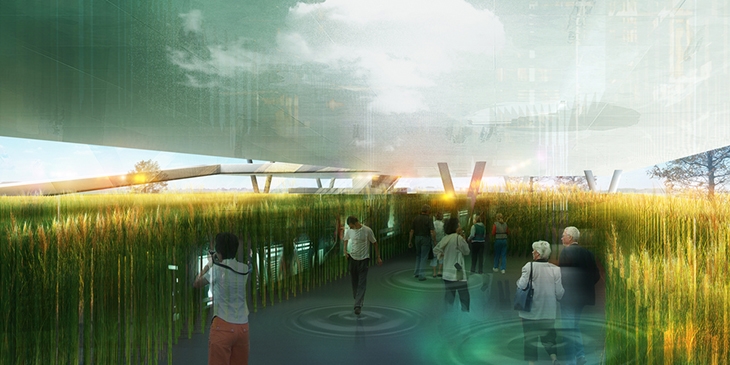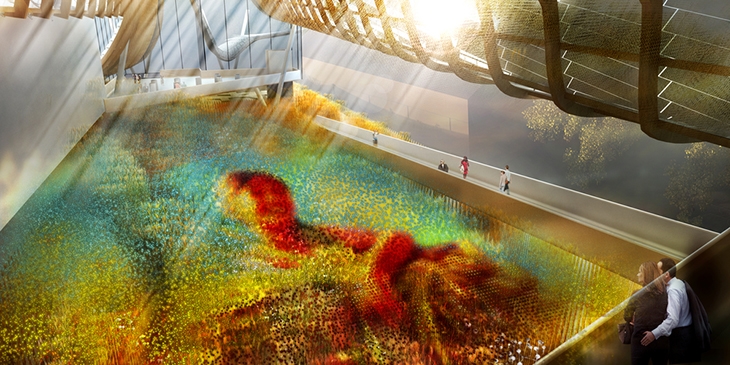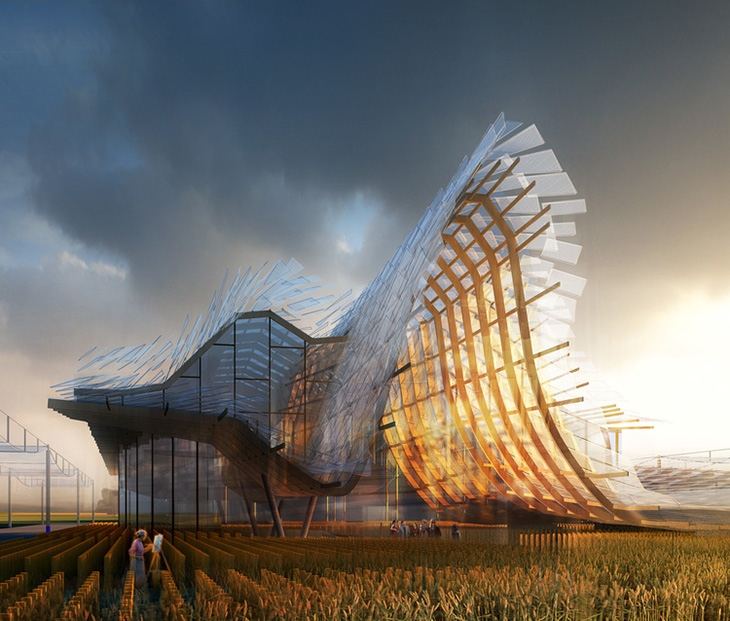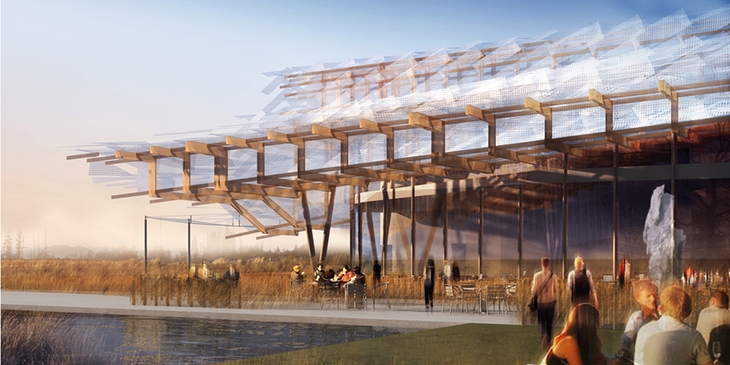The project’s floating canopy is designed as a timber structure that references the traditional Chinese “raised-beam” system, but is adapted for modern construction technology. Referencing Chinese culture and history, the canopy is covered in shingled bamboo panels that shade the spaces below. The building’s ground plane (the “field of hope”) is defined by a landscape of wheat (acknowledging China’s agrarian past) that transitions to a multimedia installation in the center. The project’s exhibition programs, located on this ground plane, are experienced as a sequence of spaces, beginning with an exterior waiting area in the landscape, leading to a themed exhibition space with interactive installations. After this, visitors are guided up a gently sloped ramp to a platform above the main exhibition space. The sequence concludes with visitors stepping outside the building onto a roof terrace that enjoys expansive views of the Expo grounds.
 IMAGES (C) STUDIO LINK-ARC
IMAGES (C) STUDIO LINK-ARC IMAGES (C) STUDIO LINK-ARC
IMAGES (C) STUDIO LINK-ARC IMAGES (C) STUDIO LINK-ARC
IMAGES (C) STUDIO LINK-ARC IMAGES (C) STUDIO LINK-ARC
IMAGES (C) STUDIO LINK-ARCREAD ALSO: HOUSE OF TREES BY VO TRONG NGHIA ARCHITECTS